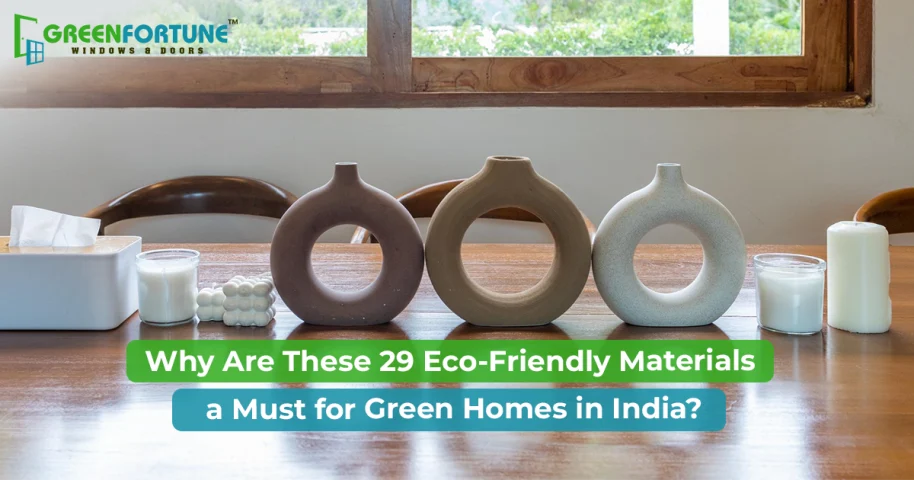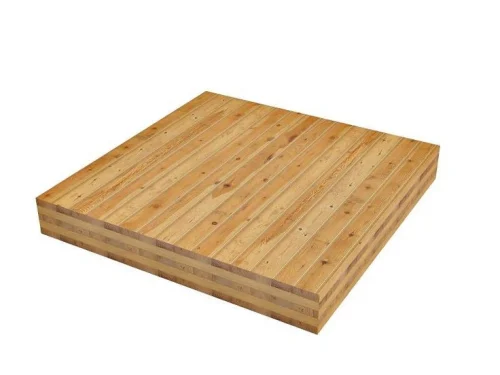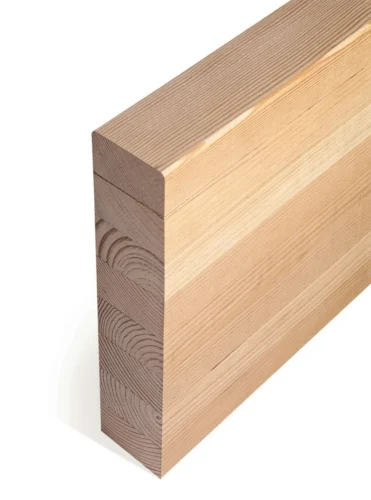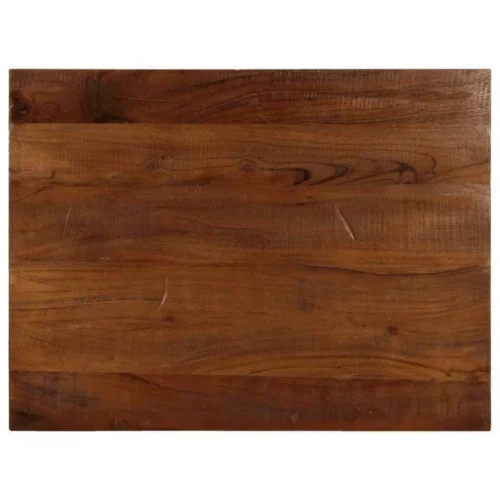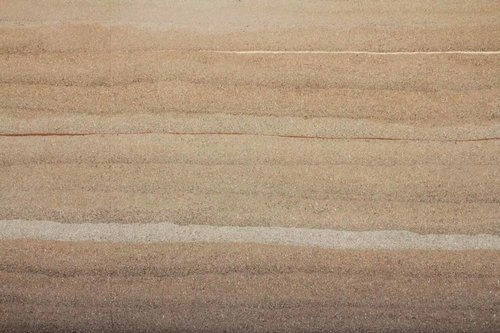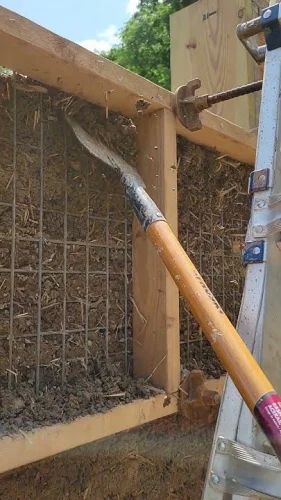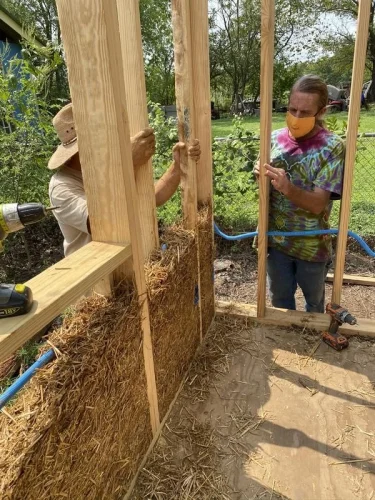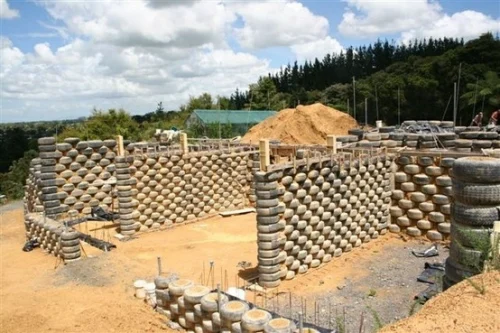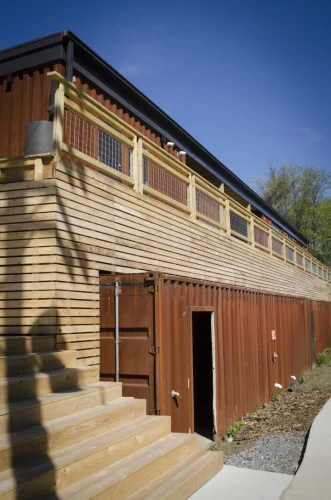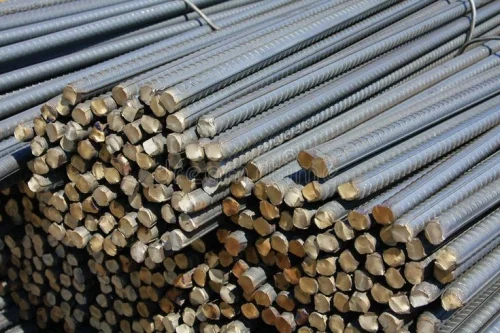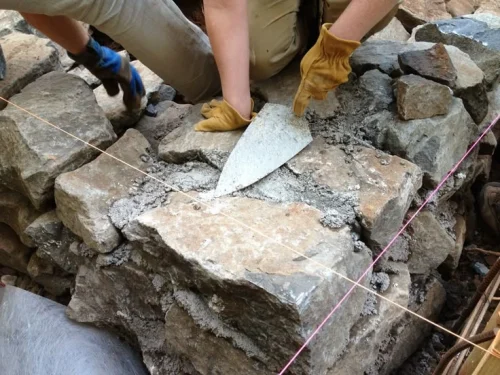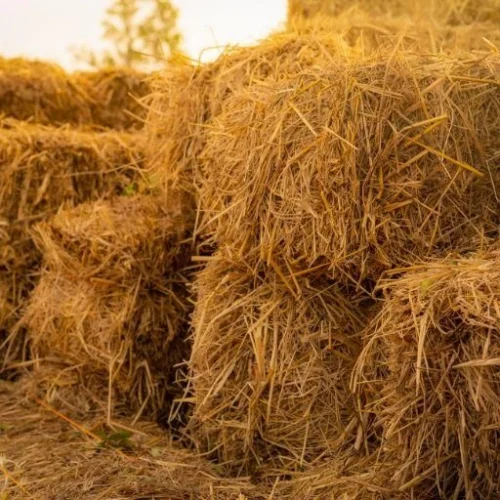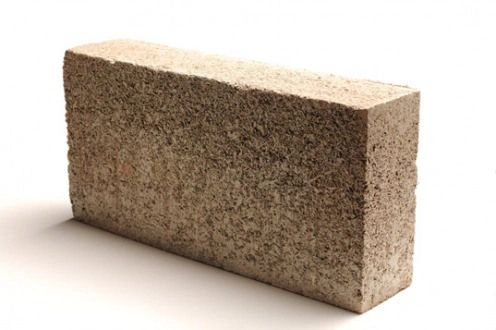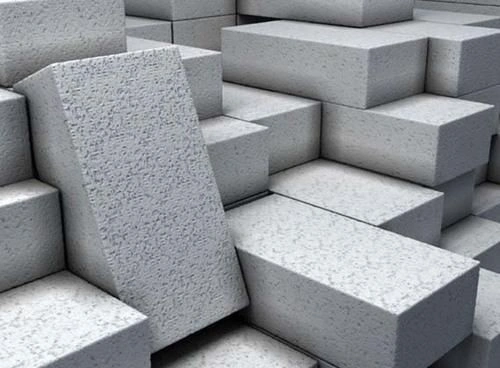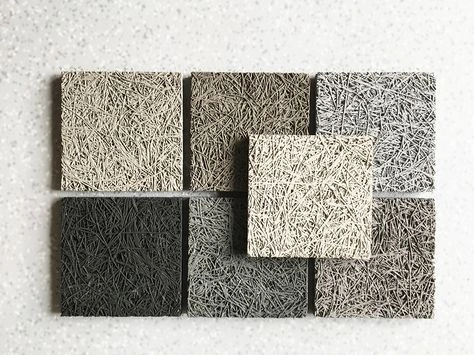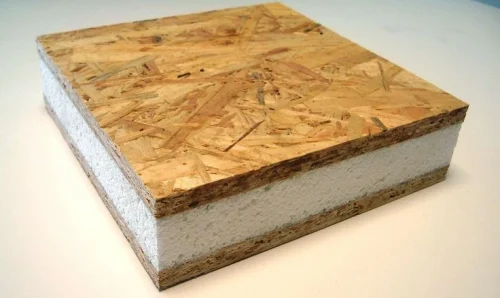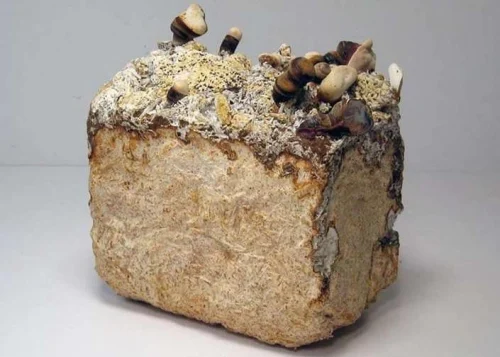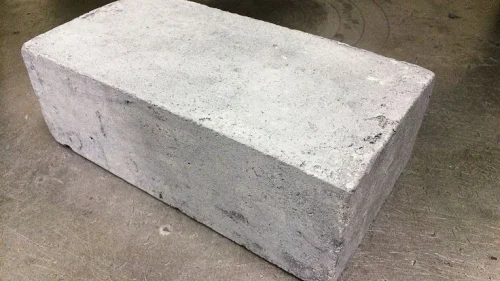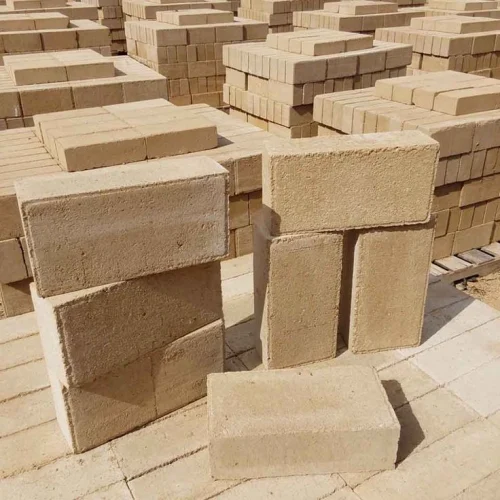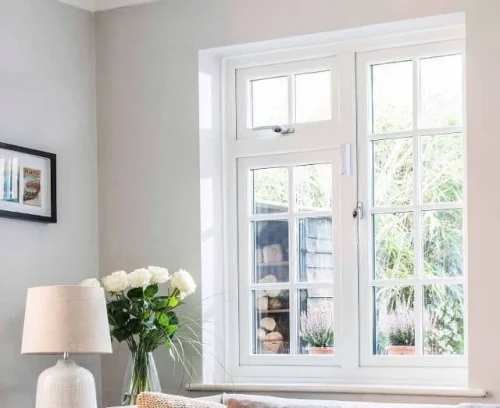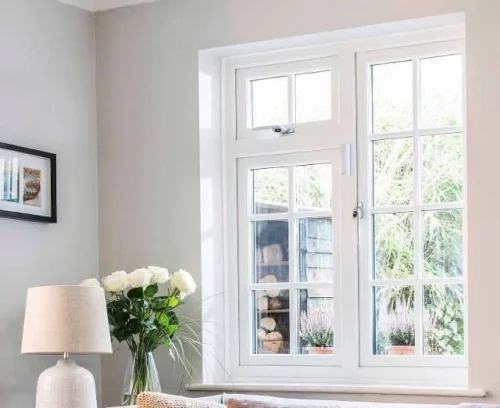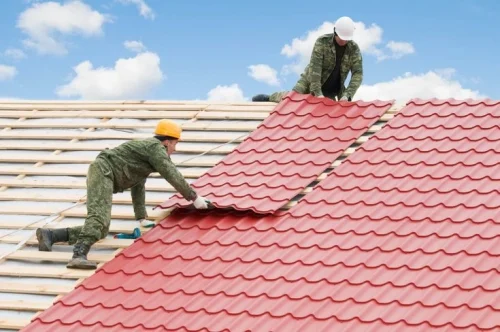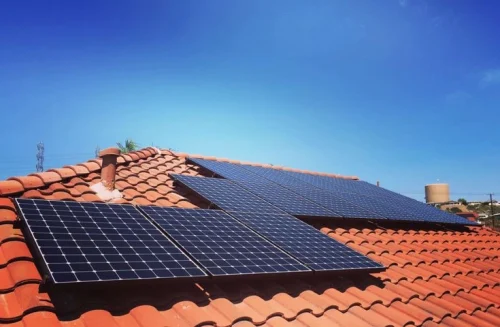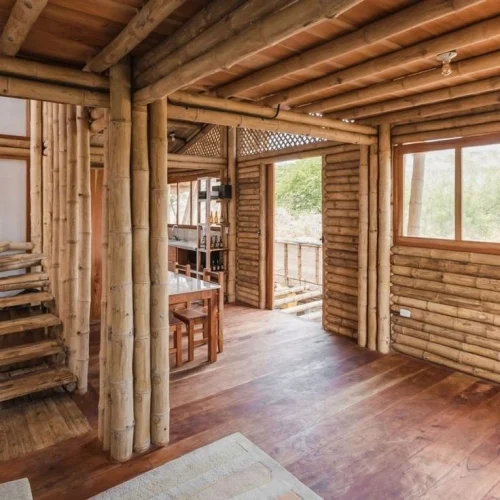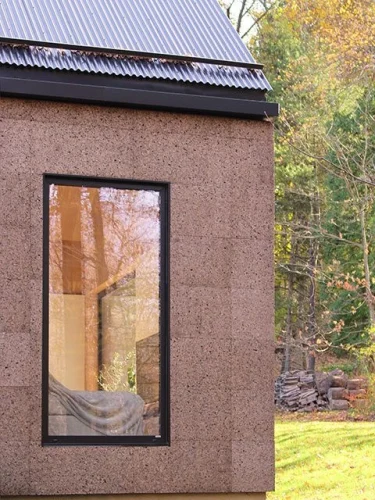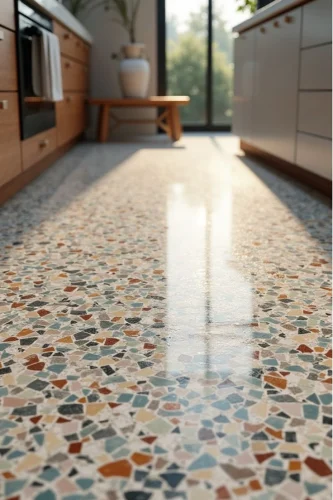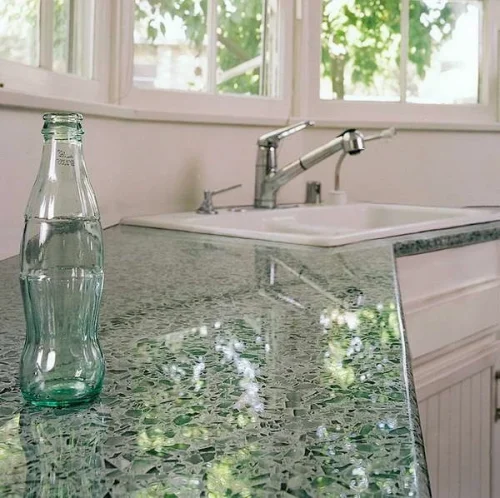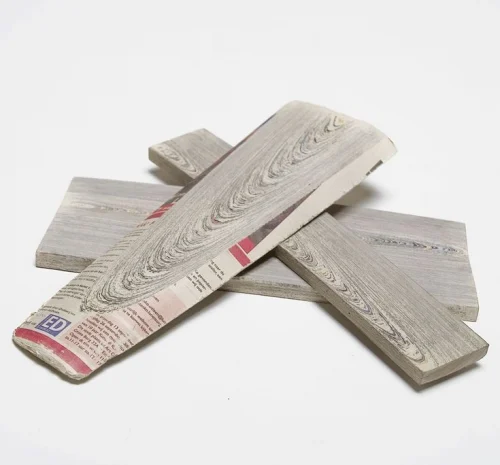
Smart Windows vs Regular Windows: Which One is Best for Indian Homes?
July 5, 2025
Sliding vs Casement Windows: Which Is Better for You?
July 5, 202529 green building materials to make your home cooler, stronger and easier to maintain.
Without thinking twice, we choose cement, bricks, and tiles for home construction. After a few years, the problem starts. Walls get damp, paint peels, rooms feel hotter, and repair costs just keep adding up. Only then we realise that the materials we choose matter.
So instead of fixing the same issues again and again, why not build smarter from the start? In this blog, we’ll explore green building materials that not only last longer but also keep your home cooler, stronger, and more comfortable.
Also read: 10 eco-friendly & sustainable interior design ideas for your home.
Table of contents
- 29 Green Building Materials For Sustainable Homes
- 1. Recycled Steel
- 2. Cross Laminated Timber (CLT)
- 3. Glulam (Glued Laminated Timber)
- 4. Reclaimed Wood
- 5. Rammed Earth
- 6. Cob
- 7. Cordwood
- 8. Earthbags
- 9. Earth-Packed Tires
- 10. Shipping Container Scraps
- 11. Steel Rods
- 12. Stone
- 13. Straw Bale
- 14. Hempcrete
- 15. Autoclaved Aerated Concrete (AAC)
- 16. Cement-Bonded Wood Fibre Boards
- 17. Structural Insulated Panels (SIPs)
- 18. Mycelium
- 19. Pollution Absorbing Bricks
- 20. Compressed Earth Blocks
- 21. uPVC Windows & Doors
- 22. High Performance Windows & Glazing
- 23. Cool Roofing Materials
- 24. Solar Tiles
- 25. Bamboo
- 26. Cork
- 27. Terrazzo
- 28. Recycled Glass
- 29. Newspaper Wood
- Final Words
- FAQs
29 Green Building Materials For Sustainable Homes
Here are the 29 green building materials used for construction to make your home more sustainable.
Let’s start with the structural materials.
1. Recycled Steel
Recycled steel is made from melted scrap and is strong, and requires far less energy than fresh steel production. It can be used for beams, columns, and roofing frames. It is also termite-proof and doesn’t crack like wood.
2. Cross Laminated Timber (CLT)
CLT is made by stacking wood layers in opposite directions and bonding them. It is extremely strong and can replace concrete or steel in entire building frames. It also stores carbon rather than emitting it.
3. Glulam (Glued Laminated Timber)
Glulam is made by glueing multiple timber pieces under pressure to form beams. It i strong, flexible and perfect for curved or long spans. It is durable, lighter than steel, and looks beautiful in exposed ceilings.
4. Reclaimed Wood
Reclaimed wood is old wood salvaged from demolished buildings. It is stronger than new timber because it has been naturally seasoned.
5. Rammed Earth
Walls or any structures built using the rammed earth technique are made out of mixing soil, sand and clay between wooden frames. It gives an earthy look and requires no paint. It provides natural insulation and keeps the indoor temperature stable.
6. Cob
Cob is a mix of clay, sand and straw sculpted by hand into thick walls. It is breathable, has excellent thermal mass, and can last for centuries if protected from heavy rain. It is one of the best green building materials you can ever come across.
7. Cordwood
In cordwood construction, short wood logs are stacked with mortar like bricks. It gives a circular wooden pattern on the wall, and when sealed well, it provides good insulation and a cosy visual.
8. Earthbags
In this construction, bags filled with soil or sand are stacked like bricks and held together with barbed wire. They are sturdy, inexpensive, and excellent at withstanding earthquakes and floods.
9. Earth-Packed Tires
Old vehicle tires are packed with compacted earth and used like bricks. They create thick, solid walls with great thermal mass, making them ideal for off-grid and energy-efficient buildings.
10. Shipping Container Scraps
Parts of retired containers are reused to make structures. The metal is strong and already engineered to handle extreme conditions.
11. Steel Rods
Choose recycled steel rods over new ones, as this one small change can reduce your project’s environmental impact without compromising on strength.
12. Stone
Natural stone is durable, fire-resistant and can be used endlessly. It’s perfect for plinths, boundary walls, and sometimes even an entire home in certain climates.
Moving forward, we will explore the wall and insulation materials.
13. Straw Bale
Bundles of dry straws are tightly stacked to form walls. Once plastered, they are fire-resistant and offer excellent thermal insulation. They are one of the best green building materials.
14. Hempcrete
Hemcrete is made from hemp stalks and lime. It is lightweight, regulates humidity and does not crack like concrete.
15. Autoclaved Aerated Concrete (AAC)
AAC blocks are made with air pockets that provide insulation and reduce weight. They use less cement and are easy to cut.
Also read: Into the eco-friendly green homes of celebrities.
16. Cement-Bonded Wood Fibre Boards
Cement-bonded wood fibre bonds are made from wood waste and cement. They are fire-resistant, termite-proof, and provide sound insulation.
17. Structural Insulated Panels (SIPs)
SIPs are factory-made panels with foam insulation sandwiched between boards. They speed up construction, reduce air leakage, and help maintain indoor temperature.
18. Mycelium
Mycelium is a fungus-based material grown in molds to form bricks or panels. It is biodegradable and fire-resistant.
19. Pollution Absorbing Bricks
Pollution-absorbing bricks have special pores that capture dust and pollutants from the air.
20. Compressed Earth Blocks
Soil is compressed into bricks without baking. It retains natural colour, balances humidity, and cuts down on cement use.
Now, let’s look into the windows, glazing, and thermal control materials.
21. uPVC Windows & Doors
uPVC frames are airtight, weather-resistant, keep the noise and heat out, and stay strong for decades with minimal maintenance.
Explore GreenFortune’s uPVC windows & doors collection.
22. High Performance Windows & Glazing
Double or triple-glazed windows with special coatings reduce heat gain and block UV rays.
Roofing and solar materials for you.
23. Cool Roofing Materials
Cool roofing materials include white or reflective tiles, paints, or membranes that lower the roof surface temperature. They can reduce the room temperature by 5 to 10°C.
24. Solar Tiles
Solar tiles are roof tiles that generate electricity, thus cutting down power bills. Unlike bulky panels, they match your roof design.
Here are the flooring, finishes, and interior materials.
25. Bamboo
Bamboos are stronger than wood and grow in 4 years. It can be used for flooring, furniture, partitions, and ceilings.
26. Cork
Cork comes from the bark and not the tree. It is moisture-resistant, naturally anti-allergy, and soft underfoot.
27. Terrazzo
Terrazzo is made from marble chips, glass and stone waste, mixed in cement. It looks stylish and is also long-lasting.
28. Recycled Glass
Recycled glass can be used in tiles, sinks, or counters. They are easy to maintain and reflect light beautifully.
29. Newspaper Wood
Newspapers are tightly rolled, glued, polished and used like wood for decor and shelves.
Also read: How can windows and doors contribute to a green building?
Final Words
Here you have the 29 green building materials. These materials keep your home cooler in summer and warmer in winter. They are cheaper to maintain, healthier to live in (no toxic fumes or damp issues), and last longer.
Start with small things, like choosing lime wash or low-VOC paints, uPVC or thermal glazed windows, recycled wood or bamboo furniture, recycled glass or terrazzo tiles, cool roof coatings, etc.
FAQs
1). Is cement a green material?
Though regular cement is not a green material, there are eco-friendly construction options like fly ash and slag cement. They reuse industrial waste and reduce emissions.
2). What are the components of a green building?
The components of a green building are eco-friendly materials, natural ventilation, energy-saving windows, water-saving systems, solar power, and good insulation. They make the home more efficient by reducing energy use.
3). How to make your home sustainable?
To make your home more sustainable, start by using recycled materials, installing energy-saving windows, improving ventilation, fixing leaks, and installing solar if possible. Even small changes like choosing low-VOC paint or building rainwater harvesting make a big impact.







